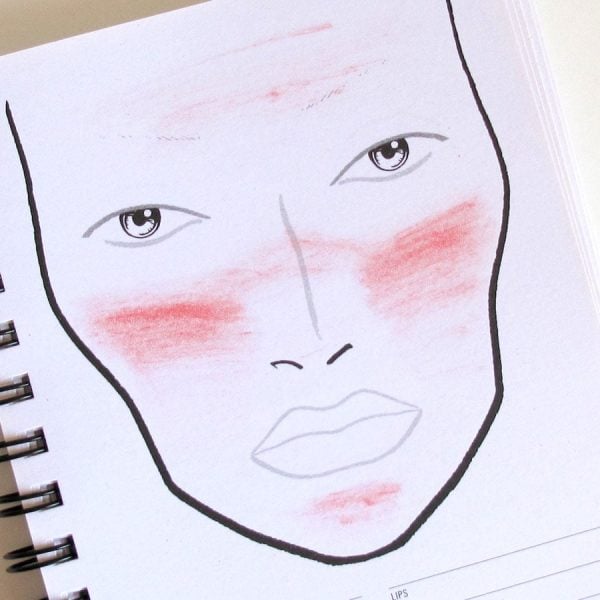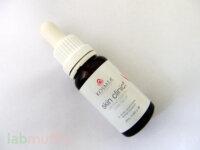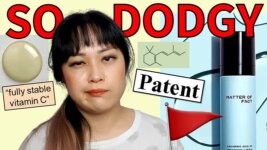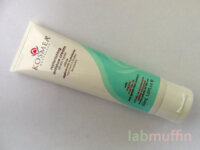Rosacea is one of the most common skin conditions. It happens when sensitive skin isn’t just sensitive – there’s redness too, and it usually rears its head between the ages of 30 and 60. The most common form of rosacea causes flushing and affects about 15% of Caucasian women.
To get a practical perspective on rosacea since I don’t have it myself (I hope and think… touch wood), I enlisted the help of Dr Estee Williams, a New York-based dermatologist who deals with many rosacea patients (you can find her on Instagram as @DrEsteeWilliams).
Common Questions About Rosacea
Q: What are the signs of rosacea?
EW: The two main signs of rosacea are facial redness and sensitivity.
Facial redness can vary from a flush-and-blush look to “broken capillaries” around the nose, and even actual pink bumps that resemble acne (even doctors sometimes have a hard time making this diagnosis).
Sensitivity is a key feature and can present as dryness, tightness, and even painful skin. Rosacea can also cause burning, stinging, and dryness of the eyes (called ocular rosacea).
Q: What are some common rosacea triggers?
EW: The most common triggers of rosacea are sunlight and stress. Many foods, alcoholic drinks, cosmetic products, and everyday household products can set off a rosacea flare.
More info: Factors That May Trigger Rosacea Flare-Ups
Q: How do seasonal changes affect rosacea?
EW: According to a large survey of rosacea patients, three out of the four most common triggers were weather-related: sunlight (81%), hot weather (75%) and wind (57%).
More info: Rosacea Triggers Survey
Q: If you have rosacea, will you have it for the rest of your life?
EW: Rosacea is a chronic condition for most people who have it. However many women who are post-menopausal find that their rosacea has quieted down.
Q: What is different about the skin of rosacea sufferers?
EW: Rosacea skin is different from normal skin in a few key ways:
On a molecular level, there is increased inflammation (elevated cytokines TNF, matrix metalloproteinases), which ultimately manifests as redness and pain. Second, there is a known abundance of a mite called Demodex in rosacea skin. Third, rosacea skin has a poor skin barrier, and therefore more sensitive to environmental and external assaults.
Q: What’s the difference between rosacea and acne?
EW: Acne and papulopustular-type rosacea both have pimples on the face. But, acne typically has comedones as well – these are blackheads and whiteheads. Rosacea bumps tend to cluster around the middle of the face, and often there is associated sensitivity. We can also distinguish them based on the history, with rosacea usualy accompanied by “dryness,” “painful skin,” and “sensitive skin.” Sometimes, these conditions are confused for one another.
How can you manage rosacea?
Unfortunately there’s no cure for rosacea. So if you’ve been diagnosed with rosacea, how can you manage it?
Here’s Dr Williams’ advice:
- Know your triggers so you can avoid them: mostly sun and stress. Wear sunscreen!
- Don’t experiment with products. Instead, stick with a tried-and-tested routine.
- Use products that repair your barrier, like moisturisers containing ceramides, dimethicone, and glycerin. Wear sunscreen all year round.
- There are also medications that can help you manage your rosacea. Mirvaso (brimonidine) and RhoFade (oxymetazoline HCl) are good for constricting blood vessels. To treat pimples, there are oral medications (doxycycline and Accutance (isotretinoin)) as well as topical creams (ivermectin, metronidazole, azelaic acid).
- Special vascular lasers and intense-pulsed light machines can be helpful for reducing redness. Dr Williams particularly likes using the V beam laser, Excel V laser, and M22 IPL.
You can follow Dr Estee Williams on Instagram as @DrEsteeWilliams.







The redness (and resulting sweating) ,I have been able to manage, but the red spots are so hard to treat. They’re actually nothing like pimples for me and very resistant to any form of treatment. Azaelic acid does help but not as much as I would like. I didn’t count myself as having rosacea until the bumps came but I’ve had intense flushing most of my life. Such an annoying skin problem to have.
It sounds really unfortunate! Hope you can get it under control 🙁
I’ve had Rosacea for 15 years. I became gluten free 2 years ago after an elimination diet revealed that I am gluten sensitive. I don’t have Celiac disease but my body reacts to gluten with inflammation. It’s interesting to me that my Rosacea and sinus symptoms improved significantly along with the quieting down of inflammation in my gut. Right now I flush only very lightly when exposed to heat instead of turning completely red and have not had any pustules for several months. I don’t have any proof that my diet was the cause but I’m happy with the results and will likely be gluten free for the rest of my life.
Hi,
Thanks for sharing everything about rosacea. A friend of mine has rosacea and has been using various products to get rid of it but nothing happened. I will recommend this blog to her, maybe she could idea how to treat her rosacea.
Really interesting interview. I ‘ve suffered from it… So I ‘ve learnt so much.
My mom had this problem in past. Although they are recovered now after taking treatment, I wish I could found such informative article before, as often said prevention is better than cure. We should eat healthily and prefer natural remedies more because when any disease not treated at right time it takes much time to recover even using other treatments. Thanks for sharing.
Can a dermaroller be used with Rosacea?
After avoiding my triggers, using azaleic acid, cera vie facial lotion & foaming face wash ( ceramide packed & inexpensive), I’m ALllll about Elta MD clear sunscreen. It’s $40 for a couple of ounces, but a true pea sized application to each cheek/ chin will totally have you covered for your hour long ride home. I set my phone alarm to remind me to apply it 45 mins BeFoRe leaving work bc that’s how much Sun and heat trigger mine. Those 2 oz have lasted about 8-9 months also!
It has niacinamide in the formula to also combat the redness 🙂 I apply 15% niacinamide directly to my face; inexpensive and effective! I use the highly effective Liquid Gold as my barrier repair wonder goo; the tiniest drop truly goes a very long way. You’ll notice a difference with a couple of days to weeks! I was never happier to be wrong as I was very skeptical.
thanks for the tips
Thanks for the tips! Many people don’t know that the sun aggravates rosacea.